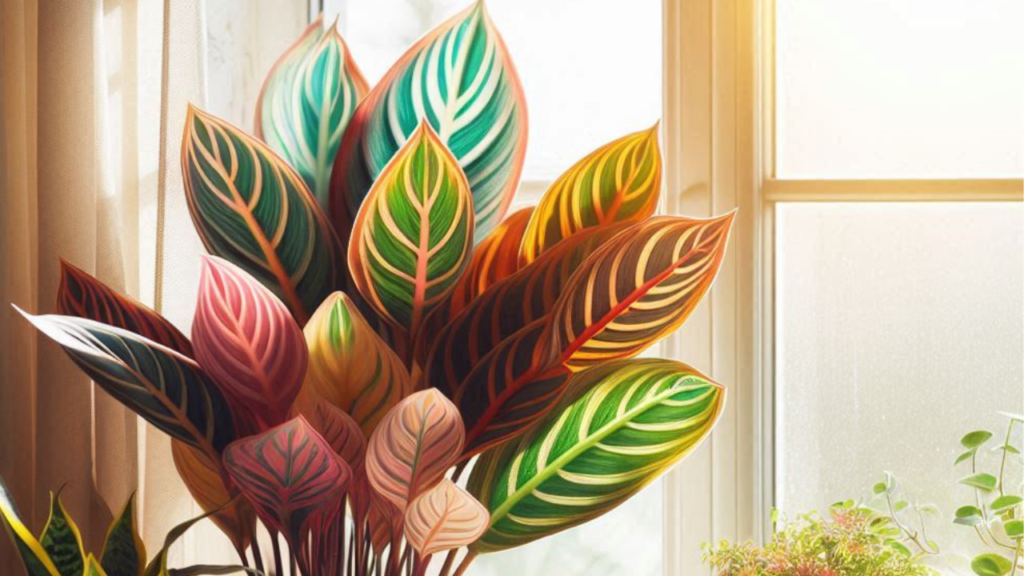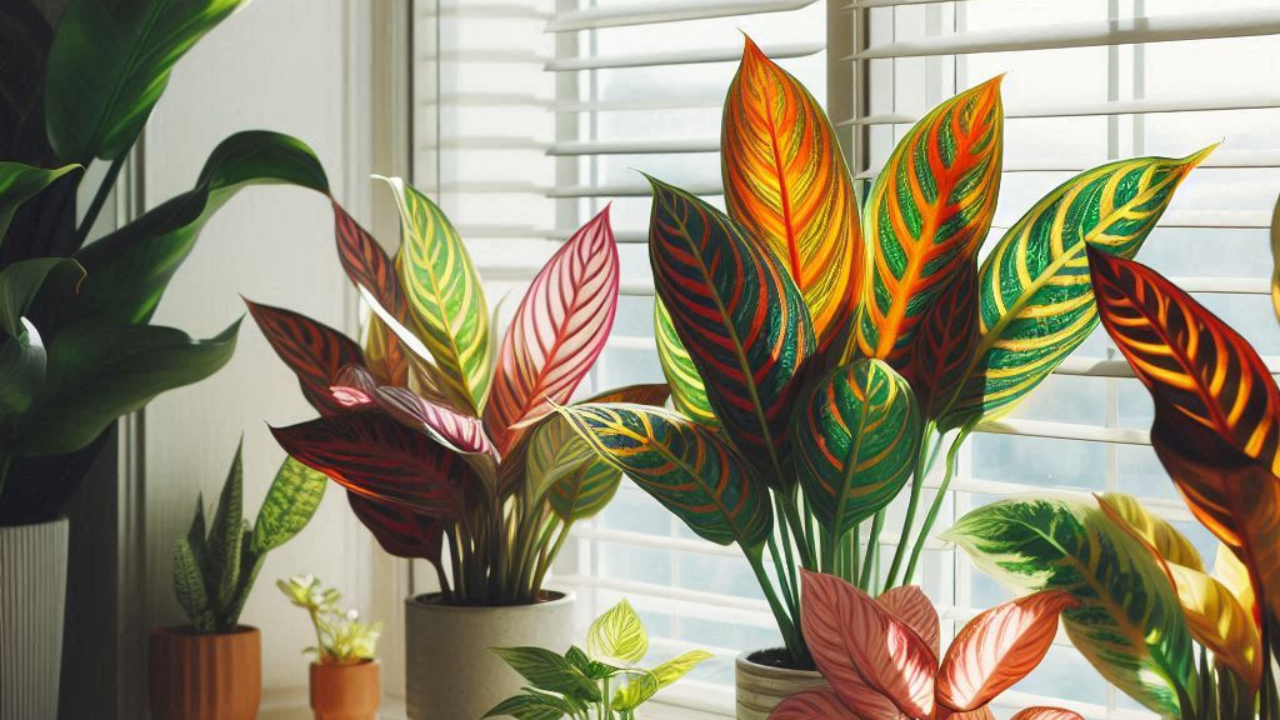Introduction
Praying plants with attractive leaves and fascinating motions, have become the most sought-after those who enjoy indoor plants. The tropical beauties are scientifically referred to as Maranta leuconeura are part of the Marantaceae family and are indigenous to the lush forests of Brazil. Their name is derived due to the distinctive way that the leaves of their branches fold up at night, looking like hands gathered in prayer.
Why have these green perennials become beloved house plants? It’s not just their stunning look that draws people to. Prayer plants are fairly simple to maintain and thrive in moderate to low light conditions, and will add an element of tropicalism inside any room. Additionally, their ability to purify air are a great option for your workplace or at home.
In this thorough guide, we’ll dive into prayers plants’ world by examining their various varieties, requirements for care and the secret to making them thrive. No matter if you’re a veteran plant-loving parent or newbie, this guide will provide you with all the information you require to care for the living masterpieces.

Understanding Prayer Plant Varieties
The phrase “prayer plant” often refers to various species of the family of Marantaceae. Let’s look at some of the most sought-after kinds:
Maranta leuconeura varieties
- Red Prayer Plant (Maranta leuconeura var. erythroneura) It is famous by its striking veins of red set against deep green leaves.
- Black Prayer Plant (Maranta leuconeura var. Kerchoveana) It has pale green leaves surrounded by deep green spots.
- Lemon Lime Prayer Plant (Maranta leuconeura var. leuconeura) It has bright green leaves and yellow variation.
Calathea species
While they aren’t technically praying plants Calatheas can be closely related to each other and are often put with other Calatheas due to similar maintenance requirements and leaf movements. A few of the most well-known Calathea varieties are:
- Peacock Plant (Calathea makoyana)
- Rattlesnake Plant (Calathea lancifolia)
- Pinstripe Plant (Calathea ornata)
Other genera related to it
It is believed that the Marantaceae group also comprises a variety of genera, including Stromanthe and Ctenanthe that have many similarities with prayer plants.
To get a deeper look into this world of exotic plants which includes the stunning variety of prayer plants, take a look at our article about several of the stunning tropical plants around the globe.
The Fascinating World of Prayer Plant Movement
A major and fascinating features of prayer plants is their nyctinastic motion and the way that their leaves change according to changes in light. This phenomenon has intrigued botanists as well as plant lovers for long periods of time.
The scientific basis for leaf movement
Prayer The leaf movements of plants can be controlled through a tiny joint-like structure known as the pulvinus. It’s situated at the base of every leaf. It is made up of motor cells that expand or contract in response to variations in water pressure which causes leaves to shift.
Circadian patterns in plant life
Similar to humans, plants have internal biological clocks, or circadian rhythms. For prayer plant species, the rhythms control the movements of the leaves, which causes them to lift its leaves during the night, and lower them during the day.
Leaf movement has evolutionary benefits that can be derived from the leaf
Scientists believe that this movement can bring numerous benefits for this plant’s natural surroundings.
- Conservation of water
- Protection against nocturnal insects
- Optimising light absorption throughout the daytime
For more interesting insights into plant behavior, make sure you read our blog post about the amazing nature of the plant.
Creating the Perfect Environment for Your Prayer Plant
In order to help your prayer plant grow It is essential to create conditions that are comparable to the natural environment. Let’s take a look at the main environmental elements:
Light Requirements
Prayer plants like the bright light of indirect, indirect. The direct sunlight can burn the delicate leaves of these plants, and insufficient light can lead to slow growth and the loss of variegation in the leaves.
- Ideal lighting conditions The best light conditions are: Put your prayer plant in an east or north-facing windows or within a few feet of the west or south-facing windows with filtering sunlight.
- Signs of excessive light The signs of too much light are bleached or faded leaves and brown spots.
- Signs of inadequate light slow growth Loss pattern of leaves, and smaller leaves.
Temperature and Humidity
As tropical plants praying plants do well in humid, warm conditions.
- Maximum temperature range 18-24degC (65-75degF)
- Humidity requirements at least 50-60% greater
To increase the humidity You can:
- Utilize a pebble tray with water
- Group plants work together
- Make use of an humidifier
Soil and Potting
A good soil mix is essential to ensure healthy prayer plants.
- Best soil mix that drain well: A well-drained mix that is slightly acidic. Mix equal parts of potting dirt peat moss, peat moss, as well as perlite.
- The right pot Choose the pot that has drainage holes to stop water from logging. Terracotta pots can help regulate moisture levels.
For more information regarding soil choice take a look at our guide to the best five soils to praying plants that thrive..
Prayer Plant Care: A Comprehensive Guide
Watering Techniques
The proper watering regimen is vital to the health of prayer plants. They thrive in moist soil however they are prone to root rot in excess watering.
- Properly scheduled watering When you water, the soil’s top inch appears dry. It is usually at least once a week dependent on the weather conditions.
- Signs of water overflow Leaves turning yellow and stems that are mushy, as well as mould on the soil’s surface.
- Signs of submerging leaf drooping crisp brown edges.
Always make sure to use water at room temperature so as to not shock the roots of your plant.
Fertilizing Your Prayer Plant
Regular fertilization is essential to keep the vibrant colors and designs of the prayer plant’s leaves.
- Different types of fertilizers Choose a water-soluble, balanced fertiliser (10-10-10 or 5-5-5).
- The frequency of fertilization Feed every 2 – 4 weeks during the growing period (spring as well as summer). Stop or reduce fertilization in the fall and winter.
Pruning and Maintenance
Regular pruning is essential to keep the shape of the plant and encourages healthy growth.
- When and what to cut Pruning is best done in the spring or in the early summer. Take away dead, discoloured or damaged leaves near the end or the top.
- Dusting, cleaning and cleaning leaves Clean leaves with a damp, clean cloth to get rid of dust and increase photosynthesis.
For more specific gardening tips, such as pruning methods, look at this article about prayer plants, and 10 essential suggestions.
Propagation: Expanding Your Prayer Plant Family
Planting prayer plants can be an enjoyable way to increase your collection, or to share with your friends.
Methods for propagation
- Division Divide the plant into smaller sections when the process of repotting.
- Cuts from stems Cut an unharmed stem that has minimum two leaves. plant it in water or soil that is moist.
Step-by step guide to success in propagation
- Select a healthy plant parent.
- To split, gently separate the roots when the process of repotting.
- To cut stems, make cuts below the leaf node.
- Cuts can be placed in water or soil that is moist.
- Make sure that the soil or water remains hot and keep the humidity high.
- Once the roots are established (usually between about 2-4 weeks) transfer them into a pot using regular plant potting mix.
Common Prayer Plant Problems and Solutions
Pest Control
Prayer plants are susceptible to pests that are common in house plants.
- Identification of common pests Find mealybugs and spider mites or scale bugs.
- Natural methods for controlling pests :
- Neem oil spray
- Insecticidal soap
- Wiping leaves using a solution of mild dish soap.
Diseases and Disorders
- Feasibility of recognizing plant ailments Be on the lookout for signs that suggest root rot and powdery mildew.
- Prevention strategies and treatment :
- Improve air circulation
- Do not overwater your plants.
- Use fungicides if necessary
For more details on how to care for and maintain your plants we suggest you read the article aquaculture plants. A comprehensive guide for newbies beneficial, as a lot of rules apply to both aquatic as well as terrestrial plants.
Decorate with prayer plants
Plants for prayer are versatile decor elements that can add a touch of elegance to different rooms in your home.
- The best places to use HTML0 are for bathrooms, kitchens or any other room that has some humidity, and light.
- Matching up with different plants Prayer plants work perfectly with tropical plant species such as elephant plants with ear buds and hoya plants..
You can use prayer plants as hanging baskets or plant stands to show off their gorgeous foliage. They are also great decorations for terrariums and dish gardens.
The Benefits of Growing Prayer Plants
Beyond their beauty Prayer plants have a variety of benefits.
- Cleansing the air As with many other houseplants, prayer plants can help eliminate contaminants in the air.
- A higher humidity The transpiration of these molecules can assist in boosting the humidity of dry indoor areas.
- Relaxation The act of taking care of plants has been proven to decrease stress and boost mood.
To learn more about the advantages that indoor plants offer, take a look at this article about 8 bamboo species that can withstand the elements that can change the look of you office.
Frequently Asked Questions
- What is the reason why leaf edges on the prayer plants becoming to brown? This could be caused by low humidity, submerging or fluoride present in the tap water. Try increasing the humidity and using water that has been filtered.
- The leaves of my prayer plant aren’t folding in the night. Does this mean something is wrong? It’s not necessarily. The older plants might lose some leaf movement. If the plant is healthy there is no reason to be concerned.
- Prayer plants can be grown outside? In tropical climates (USDA zones 11-12) prayers plants are able to be planted outside. In colder climates they are best kept in indoor pots.
- How often do I need to repot the prayer plants? Typically every 1-2 years or when the plant is outgrowing the pot it is currently in.
- What are the effects of prayer plants? Are they harmful for animals? No, prayer plants aren’t toxic to dogs and cats which makes them an appropriate option to pet parents.
Conclusion
Prayer plants are an example of nature’s artistic flair. With their beautiful foliage and captivating movement, they add the beauty of tropical plants to our home. While they require more care than other houseplants however, the benefits of growing these beautiful living creations are far greater than the efforts.
Keep in mind that the secret to success for prayer plants is mimicking their natural habitat, which includes hot temperatures, high humidity and a always humid (but not drained) soil. If properly cared for the plant you pray for will flourish giving you years of beauty from nature and the joy of caring for an exotic piece within your home.
If you’re an experienced gardener or are just beginning to develop a green thumb, that this guide has encouraged you to invite a prayer plant into your life. Enjoy your growth!

